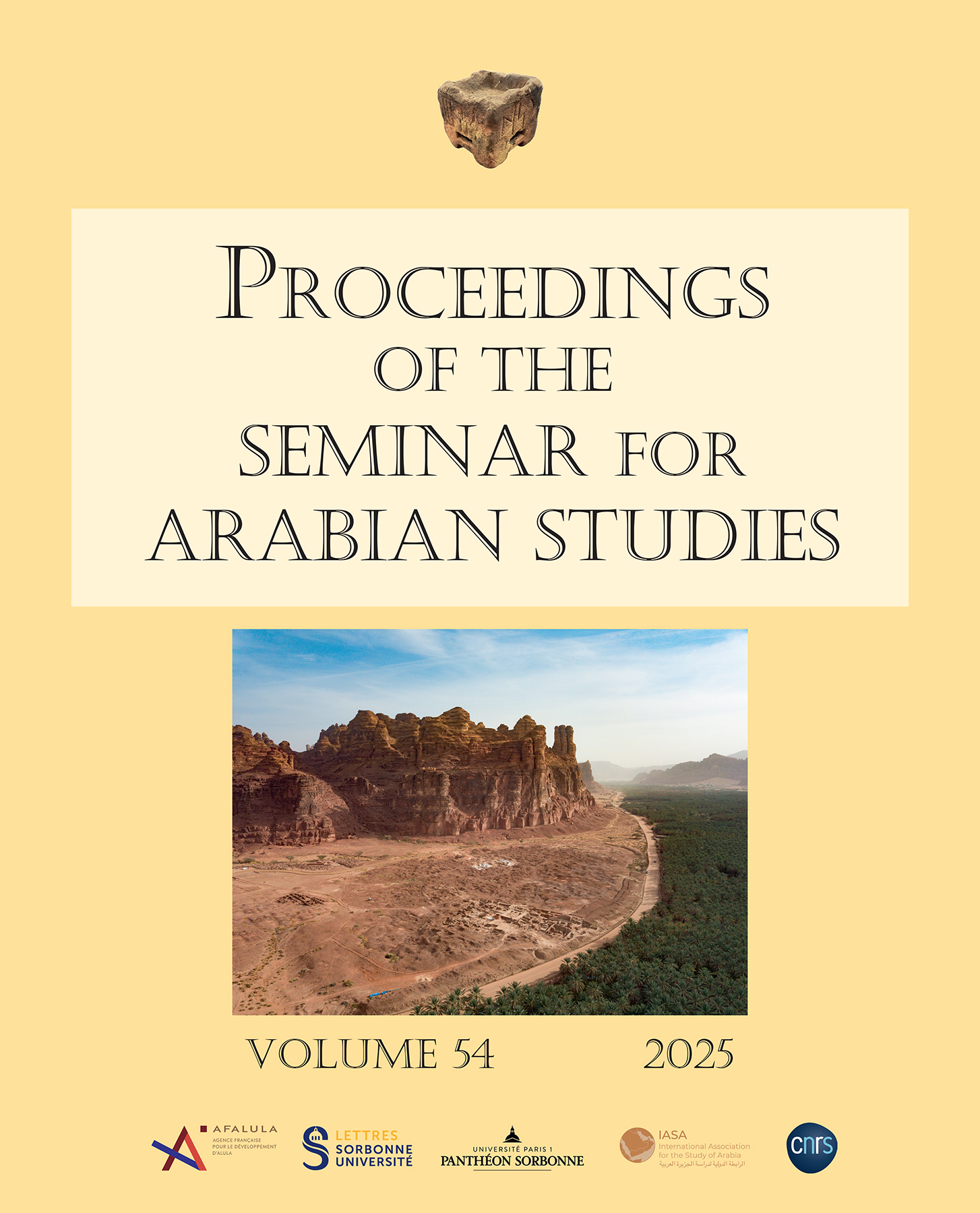Interconnected buildings in the Old Town of AlUla and their social significance
Keywords:
Saudi Arabia, AlUla, social organisation, neighbourhoods, interconnected buildingsAbstract
Many traditional Islamic towns exhibit a clear connection between their urban structure and the social groupings that define their communities. This complex relationship is fundamentally anchored in a strong sense of place as studies demonstrate that it is common for clusters of buildings to be inhabited by direct or extended family members. However, attempts to reconstruct this distinctive socio-spatial pattern pose a significant challenge in the case of abandoned historical urban centres, regardless of whether they have been deserted for just a few decades.
The Multiscalar Documentation of Urban Dynamics (MuDUD) Project’ interdisciplinary research on the Old Town of AlUla in the Kingdom of Saudi Arabia serves as an example of a non-invasive and successful method for investigating the impact of social dynamics on architectural space. This paper delves into the subject by examining building archaeological data pertaining to clusters of residential buildings, which are physically interconnected through various architectural means, in addition to engaging in targeted interviews with former town inhabitants. Consequently, it explores the mechanisms behind the creation and transformation of clusters of buildings, offering a new perspective on the town’s historical context and urban dynamics through the ages, with a specific focus on the last two hundred years.
References
Al-Abodi A. 2012. The Architectural Features of the Traditional House of Al-Ula Town (Al-Deerah). Journal of Studies in Archaeology and Heritage.
Al-Budair S. 2021. From Al-Ula to the End of the World – Excerpts from the Biography of a Diplomat. Riyadh. Al-Obeikan.
Al-Hathloul S.A. & Anis-ur-Rahmaan S. 1985. The evolution of urban and regional planning in Saudi Arabia. Ekistics 52 (312): 206-212.
AlMadani A. 2021. The Journey Through Time Masterplan is built on a deep knowledge of the people, the heritage and the landscape of AlUla. https://www.linkedin.com/pulse/journey-through-time-masterplan-built-deep-knowledge-people-almadani/
AlModarra A. in preparation. Traditional Residential Architecture in the Old Town of Al-Ula, “Deira” (Ethnoarchaeology). Riyadh: King Saud University.
Alnaim M.M. 2022. Understanding the Traditional Saudi Built Environment: The Phenomenon of Dynamic Core Concept and Forms. World Journal of Engineering and Technology 10: 292-321.
Barański M.Z. 2023. Field Report, Phase 6: Building Archaeological Investigations and Architectural Recordings. In A. Vernet, A. AlModarra, B. Khan & J. Giraud 2023. Historical Investigation of AlUla Old Town. Multiscalar Documentation for Urban Dynamics. Field Report Phase 6, 2022. Unpublished Report.
Barański M.Z. 2024. Field Report, Phase 7: Case Study Areas and Groups of Connected Units. In A. Vernet, A. AlModarra, B. Khan & J. Giraud 2024. Historical Investigation of AlUla Old Town. Multiscalar Documentation for Urban Dynamics. Field Report Phase 7, 2022. Unpublished Report.
Battesti V. & Marty L. 2023. Bedouins and Sedentaries today in al-‘Ulâ (Kingdom of Saudi Arabia): al-diyâr and al-Dîra in the rear-view mirror. Arabian Humanities 17.
Correia J. & Taher M. 2015. Traditional Islamic Cities Unveiled: The Quest for Urban Design Regularity. Revista Gremium 2 (04).
Dabbour L.M. 2021. Morphology of Quarters in Traditional Arab Islamic City: A Case of the Traditional City of Damascus. Frontiers of Architectural Research 10: 50-65.
Dallas R. (ed.). 2003. Measured Survey and Building Recording for Historic Buildings and Structures, Guide for Practitioners 4. Edinburgh: Historic Scotland.
Gilento P. 2020. Building Archaeology. In A. Vernet, A. Baaklini, C. Marquqire, P. Gilento & R. Mèreuze (eds), MuDUD. Old Town Investigation Project for AlUla. Scientific Report. Phase 0. s.1. Paris: Archaïos.
Gilento P., Pesce G., Vernet A. & Pesce C. forthcoming. Development of an Interdisciplinary Approach to the Radiocarbon Dating of Earth Mortars from Alula Old Town (Saudi Arabia). Integration of Building Archaeology, Mortar Analysis and Radiocarbon Dating. Radiocarbon.
Hakim B.S. 1986. Arab-Islamic Cities. Building and Planning Principles. London: Routlege. Taylor & Francis Group.
King G. 1998. The Traditional Architecture of Saudi Arabia. London: I.B. Tauris & Co.
Massalski R. 1982a. Graficzna metoda badania zabytkowych murów. Zeszyty Naukowe Politechniki Gdańskiej 347, Architektura 22: 101-14.
Massalski R. 1982b. Problemy metodologiczne badań architektoniczno-archeologicznych. Zeszyty Naukowe Politechniki Gdańskiej 347, Architektura 22: 115-57.
Nasif A.A. 1988. Al-‘Ula: A Historical and Archaeological Survey with Special Reference to Its Irrigation System. Riyadh: King Saud University Press.
Prior+Partners & Royal Commision for AlUla 2020. AlUla Zoning Rule Book. The Journey Through Time. AlUla: RCU.
Roediger H.L. & Abel M. 2015. Collective memory: a new arena of cognitive study. Trends in Cognitive Sciences 19 (7): 359-361.
Samuel R. 1994. Theatres of Memory. Past and Present in Contemporary Culture. London: Verso.
Till J. (2008). Three Myths and One Model. Building Material 17: 4-10.
Vernet A., Khan B. & Giraud J. (eds.) 2021. MUDUD. Historical Investigation of AlUla Old Town. Multiscalar Documentation for Urban Dynamics. Scientific Report, 2021. Unpublished Scientific Report. Paris: Archaïos.
Vernet A., AlModarra A., Khan B. & Giraud J. (eds.) 2022. Historical Investigation of AlUla Old Town. Multiscalar Documentation for Urban Dynamics. Field Report Phase 4, 2022. Unpublished Report. Paris: Archaïos.
Vernet A., AlModarra A., Khan B. & Giraud J. (eds.) 2023. Historical Investigation of AlUla Old Town. Multiscalar Documentation for Urban Dynamics. Field Report Phase 6, 2022. Unpublished Report.
Vernet A., AlModarra A., Khan B. & Giraud J. (eds.) 2024. Historical Investigation of AlUla Old Town. Multiscalar Documentation for Urban Dynamics. Field Report Phase 7, 2022. Unpublished Report.
Wertsch J.V. & Roediger H.L. 2008. Collective memory: Conceptual foundations and theoretical approaches. Memory 16 (3): 318-326.
Published
How to Cite
Issue
Section
License
Archaeopress Publishing, Oxford, UK


